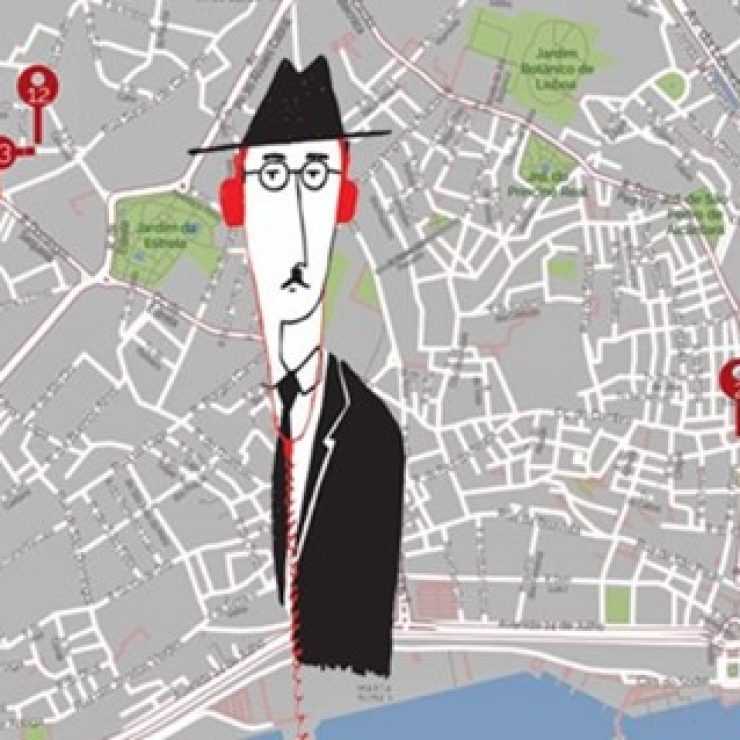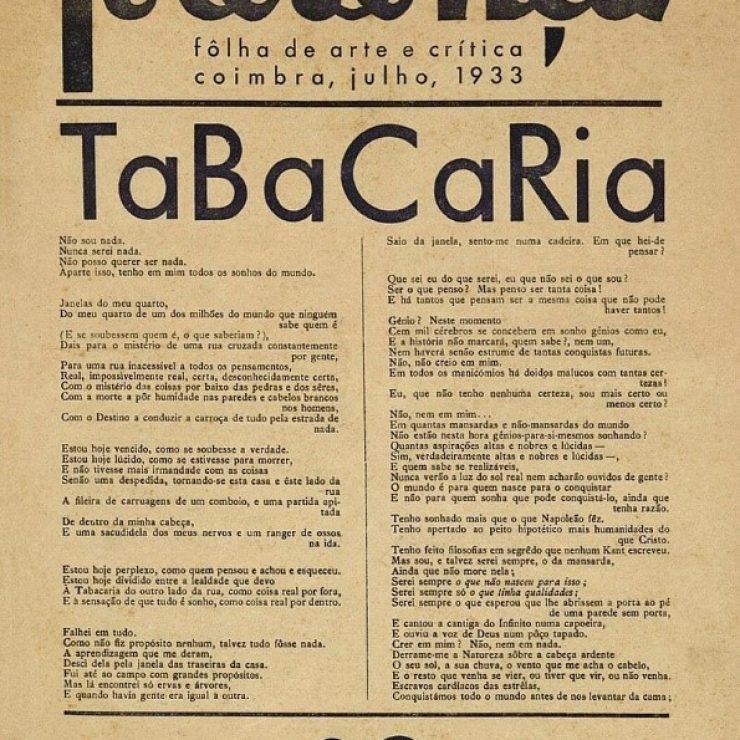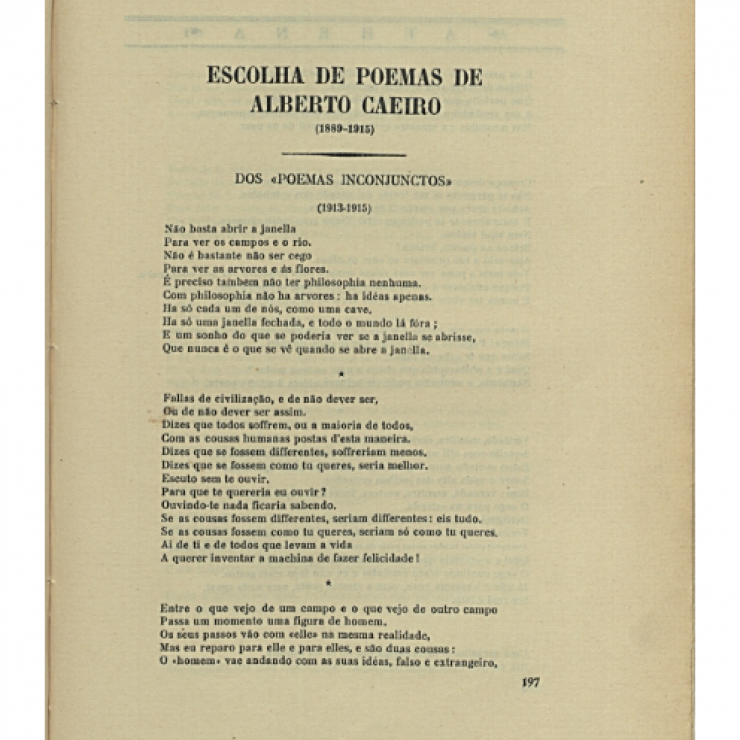It was in 1919 that Fernando Pessoa met the woman who will be in history as his only girlfriend: Ofélia Queiroz. Both would have met at the end of the year. So, between autumn and the beginning of winter of 2019, the centenary of such meeting is celebrated, which was a memorable moment in Pessoa’s life and started a love relationship between both of them, being one of the most read and spoken of Portuguese literature. So, let us know more closely love’s dimension in the poet’s life and work…
Fernando and Ofélia
It is well known that Fernando Pessoa and Ofélia Queiroz met at the office of the company Félix, Valladas & Freitas, at Rua da Assunção, no. 42, 2º, in Lisbon Downtown. Fernando was 31 years old and worked there in one of the many offices where he exercised the activity of a translator of business documents. Ofélia was 19 years old and the youngest and spoiled daughter of eight children. She spoke French and enjoyed a more independent life from her family, thus seeking work as an employee at the same company, where she was admitted to work at the end of 1919.
It was Ofélia herself, many years later, who told how was the first meeting between both of them on the very day she presented herself for an interview. This description by which Ofelia portrays Fernando became famous, when she saw him climb the stairs of the building: “When walking, he seemed floating on the floor“. Ofélia was waiting for someone to open her the office door and suddenly she saw this man with “glasses and a tie around his neck”, which immediately caused a sympathetic feeling on herself: “I do not know why, but I felt a terrible desire to start laughing”. She did not know then, that this man would soon become a colleague (and not only that…).
It is also from Ofélia’s words that we know the circumstances of the first kiss between them. It was in the early 1920s and suddenly, while both alone in the office without electricity because of a technical problem, the two had their first occasion of intimacy. And the poet did not let it pass in vain. He turned on an oil lamp, approached the table where Ofélia used to work, and, waiting for the electricity to return, he recited her loving verses from Shakespeare’s Hamlet dedicated to Ophelia, the female character of that drama:
«Oh dear Ofélia! I can scarcely measure my verses; I do not have in me the art to measure my sighs; but I love you to the extreme. Oh! Up until the last extreme, believe me! »
(Free translation)
What happened next has already entered into the collective memory of Pessoa’s readers. By Ofélia’s words: Fernando “kissed me passionately, like crazy.” Ofelia returned home “devoted and confused”, and this was how the love relationship began. A dating made of kisses, yes, but also with tours along Lisbon, and love letters.
All love letters are ridiculous
Their dating lasted about two years, in two separate phases: being the first in 1919-1920; the second, in 1929-1930. The main testimony of those years are the love letters, which in the decades after the poet’s death were published in several and successive editions. We also know, thanks to the efforts of academics like Pizarro, Ferrari and Cardiello, some of the gifts that Pessoa offered to his beloved.
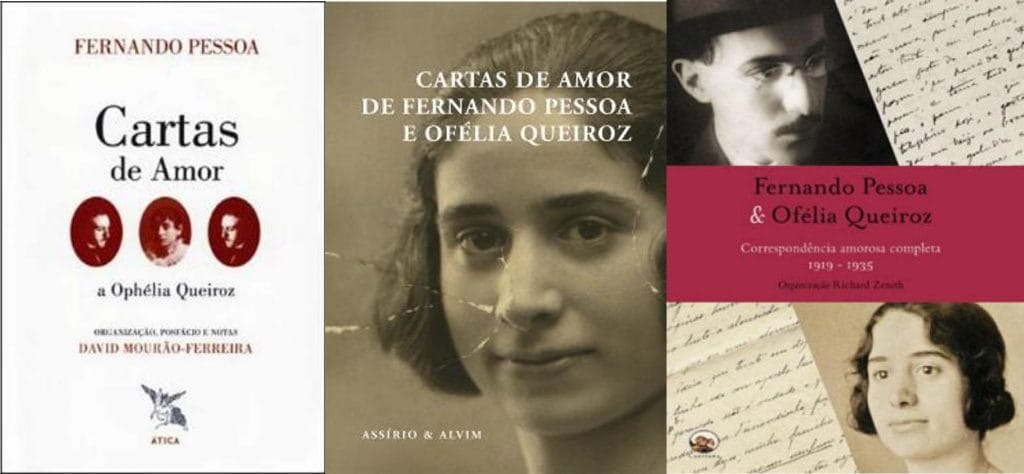
In the letters we discover a different, more human and sentimental Pessoa compared to the abysmal genius of “Desassossego” (The Book of Disquiet)and from the architect who built such complexity of heteronyms. From the words of “Nininho” dedicated to “Bebé” emerges a passionate Pessoa, sometimes jealous, sweet, dedicated and, as might be expected, ironic. Even the heteronomous Álvaro de Campos send a letter to Ofélia to communicate that his “friend” Fernando was not, on that day, in a position to… communicate with Ofélia herself (!). By the way, Campos was the author of a well-known poem of 1935 in which the epistolary courting between Fernando and Ofélia seems to echo:
« All love letters are
Ridiculous.
They wouldn’t be love letters if they weren’t
Ridiculous.
In my time, I also wrote love letters,
Like all others,
Ridiculous.
If there is love, all love letters
Have to be
Ridiculous.
But, after all,
Only creatures who never wrote
Love letters
Are the
Ridiculous ones. »
No doubt Ofélia realized who she was dealing with: a man, Pessoa, whose literary mission, which – according to him God himself had entrusted him – occupied his whole mind and activity. Maybe it was this, together with the unmistakable mood swings that sometimes overwhelmed Pessoa, the reason that led him to suspend and end the dating of Ofélia, either in 1920 or definitely in 1930. As for this second dating phase, it is important to mention that it is due to the initiative of Carlos Queiroz, a young poet, friend of Pessoa and nephew of Ofélia, a house companion, both living in Rossio, near the Station. In fact, it was Carlos Queiroz who handed over to “Aunt” Ofelia the famous photograph of Pessoa, caught “in the act” in Downtown store at Abel Pereira da Fonseca. The sight of such image aroused sympathy in Ofélia and soon after that, the second phase of the love relationship began, which Pessoa would again interrupt after a few months, declaring to Ofélia not being able (or unwilling) to marry her due to the difficulties that his mission as a writer imposed on his life (among them, notable financial difficulties).

The love in Pessoa
It has been said more than once that the loving or sentimental aspect is not predominant in Pessoa’s writing and life. This may be partly true. However, those who have the patience to go through the thousands of pages of the poet’s work will notice the presence of various love poems and other texts related to sentimental and feminine themes. Regarding this last aspect, for example, a selection of poems dedicated to women was object of a musical interpretation by the Brazilian pianist and composer Patrícia Costa, in the music album O Feminino em Pessoa.
Regarding the love poems, there are some books and anthologies that offer us this author’s facet in a very timely manner. We can mention three: “Amo como o Amor Ama” (I Love as Love Loves) by the organization of Mariana Gray de Castro; “Amar é Pensar” (Loving is Thinking), a poetic anthology edited by Vasco Silva, and another anthology, “Amor na Obra Literária de Fernando Pessoa” (Love in the Literary Work of Fernando Pessoa), prefaced by Ricardo Belo de Morais.
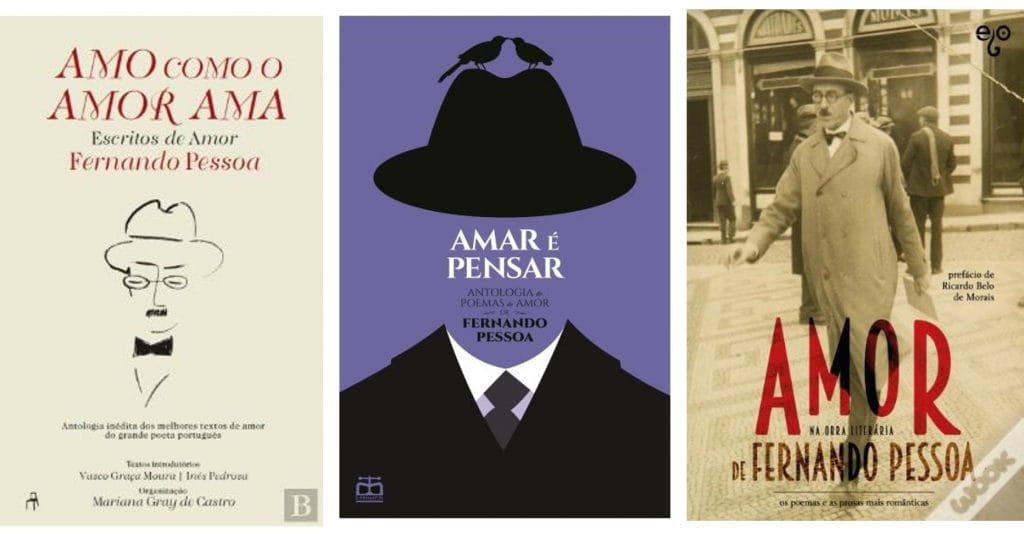
Before finishing, it should be noted that although Ofélia was probably the only loving commitment with some stability in Pessoa’s life, he probably had other more or less brief passions, such as the English woman Madge Anderson, with whom Pessoa exchanged letters and to whom he probably dedicated poetic verses shortly before his death, in 1935. And more secrets may yet come out of the famous “chest” of this man as “plural as the universe.” However, one hundred years after that first unexpected encounter on the stairs of a downtown building, the name of Ofélia Queiroz remains the name of love when we think of Fernando Pessoa.
« I went crazy, I got dizzy,
My kisses were countless,
I squeezed her against me,
I wrapped her in my arms,
I got drunk on hugs,
I went crazy and it went like this.»
F. Pessoa
Fabrizio Boscaglia
_
Discover Lisbon & Pessoa from Lisboa Pessoa Hotel.
_
Consulted and cited editions:
F. Pessoa, “Cartas de amor” (Love Letters), organization, preface and notes by David Mourão-Ferreira, preamble and creation of the text by Maria da Graça Queiroz, Lisbon, Attica, 1979.
“Cartas de amor de Fernando Pessoa e Ofélia Queiroz” (Love letters from Fernando Pessoa and Ofélia Queiroz), ed. Manuela Parreira da Silva, 3rd ed., Porto, Assírio & Alvim, 2015.

